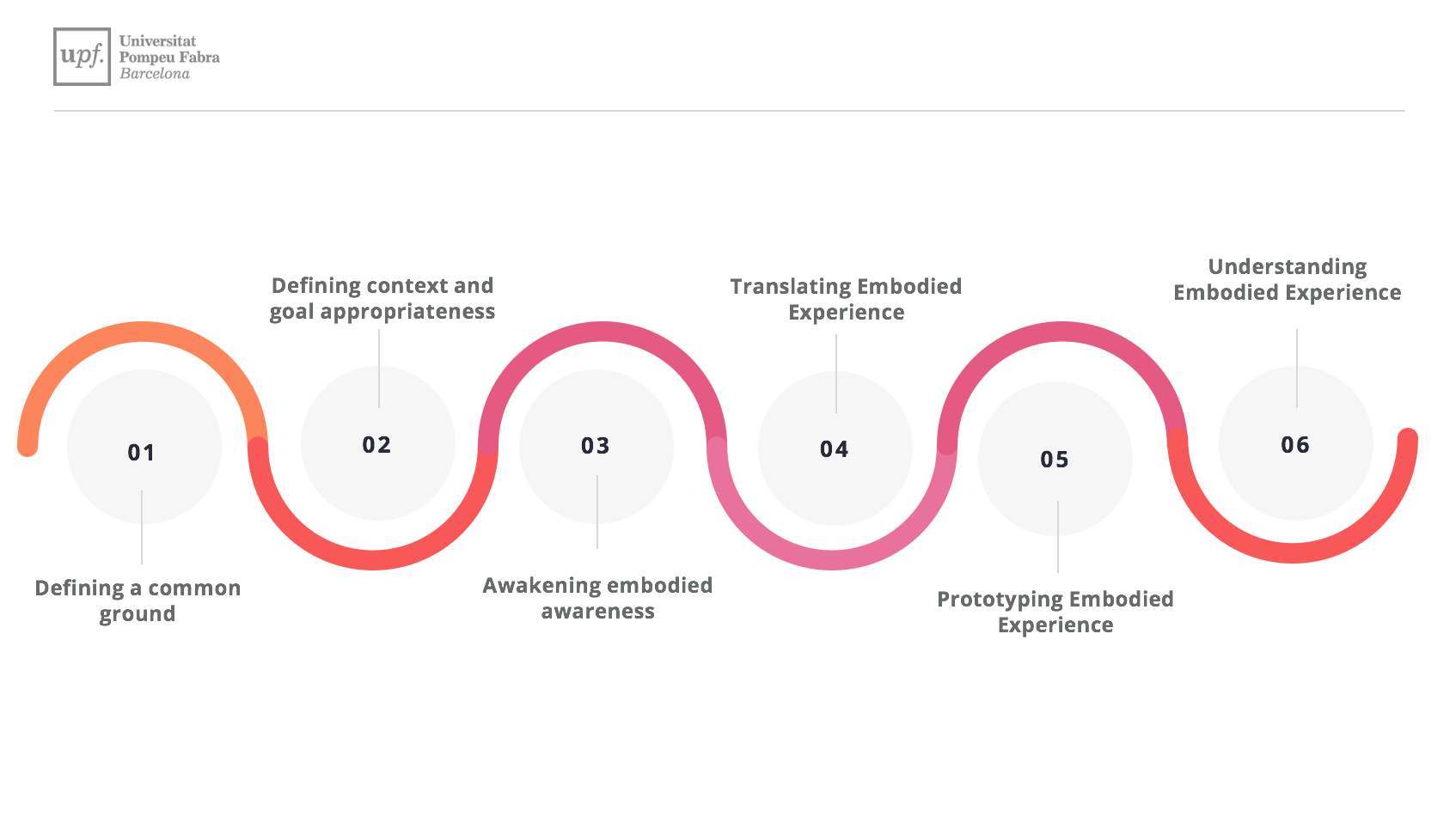FUBImethod
We particularly aim to engage children in co-design processes in Full-Body Interaction and to benefit from their natural playfulness and expertise in movement.
Description:
The main goal of the FUBImethod (Full-Body Interaction co-design method) is to help interaction designers in Full-Body Interaction to guide intergenerational teams (children, designers, topic experts, etc.) and their design sessions with a number of techniques to foster body awareness and making the body be the focus and protagonist during the design. The method is structured in six stages: (1) Defining a Common Ground, (2) Defining Context and Goal Appropriateness (3) Awakening Embodied Awareness, (4) Translating Embodied Experience, (5) Prototyping Embodied Experience and (6) Understanding Embodied Experience.
Benefits:
- Engage children in co-design processes and to benefit from their natural playfulness and expertise in movement
- Give high priority to providing tools that make children understand how their bodies mediate their experience of the world
- Help to propose computer-based activities in which the body plays a meaningful role
- Propose strategies to strengthen children’s perspectives in the design process
- Achieve a common agreement in the design goals and choices within the rest of the team
The full description of the method has been formalized as a scientific paper.
Marie-Monique Schaper, Ole Sejer Iversen, Laura Malinverni, Narcis Pares. (2019). FUBImethod: Co-Design Strategies to engage Children within Intergenerational Teams in Full-Body Interaction. International Journal of Human-Computer Studies. 132: 52-69. DOI= http://doi.org/10.1016/j.ijhcs.2019.07.008

